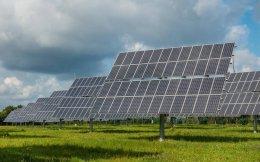On New Year’s Eve, Prime Minister Narendra Modi announced a slew of sops, after the 50-day window to deposit old Rs 500 and Rs 1,000 notes came to an end on 30 December.
Among the various sops that Modi announced were cheaper home loans for people from the middle and lower-income classes. He also asked banks to lower home loan interest rates.
The prime minister’s nudge, and the fact that banks are cash rich following the massive inflows in the wake of demonetisation, seems to have had its desired impact, with the State Bank of India cutting its marginal cost of funds-based lending rates by as much as 0.9 percentage points. Punjab National Bank, Union Bank of India, State Bank of Travancore, IDBI Bank and Indian Overseas Bank also reportedly announced rate cuts. Other banks, too, are likely to bring interest rates down in coming days.
But why are banks cutting interest rates?
Since 8 November, an estimated Rs 14.9 lakh crore has reportedly been injected into the banking system. This has left banks cash rich, and they now need to boost credit growth to deploy this excess money.
Will this mean a substantial reduction in your EMI outgo or repayment tenure?
While banks typically do not change EMIs for existing loans, they do alter repayment periods as interest rates change. So, a Rs 50 lakh loan, which would have taken 300 months to repay at an EMI of Rs 42,475, will now take just 242 months.
Home loan rates are now at their lowest levels for several years. SBI’s three-month MCLR fell from 8.65% to 7.75%, while for one year the figure came down to 8% from 8.9%. To be sure, home loans are benchmarked to the MCLR and are marked slightly above the figure. A report in The Times of India says that while SBI had earlier kept the spread at 0.2%, it has now been changed at 0.6%.
This would mean that a new loan of up to Rs 75 lakh, which earlier would have been at 9.1%, will now be disbursed at an interest rate of 8.6%. Effectively, the EMI for a Rs 1 crore loan, with a period of 25 years, will now be Rs 78,850 as against Rs 84,950 earlier.
How do middle and lower-middle-income borrowers tend to gain?
A home loan of up to Rs 9 lakh stands to get a 4% interest subvention while that of up to Rs 12 lakh will get a 3% rebate. This subsidy on interest could mean that for a substantial chunk of lower and middle-income families who are living on rent, availing a loan and going in for their own house may become profitable, as their EMIs will now be cheaper than or at par with the rent.
Moreover, as an additional sop to the rural population, which has been hit hard by his drive to demonetise 86% of the currency in circulation, Modi has allowed a 3% subvention for a renovation loan of up to Rs 2 lakh.
What impact could this have on the real estate sector?
The real estate sector has been hurt by demonetisation, especially the resale market, which was heavily cash dependent. Demonetisation, in fact, was a double whammy for the sector, which had anyway been grappling with a slowdown. In fact, a VCCircle report said last week that capital inflows into the real estate sector had halved in 2016, with the sector attracting just $2.4 billion compared with $5.3 billion in 2015.
Lower home loans could see the fortunes of the sector picking up, especially in the affordable housing segment in which the average loan size is in the Rs 10-12 lakh range. In fact, in his speech, Modi also said that the government will construct 33% more rural houses under the Pradhan Mantri Awas Yojana (PMAY).
Moreover, on 22 November, just weeks after it announced its move to abolish Rs 500 and Rs 1,000 notes, the government approved the construction of just under 2 lakh low-cost houses under the PMAY (urban), taking the total target to almost 13 lakh houses.
Like this report? Sign up for our daily newsletter to get our top reports.





